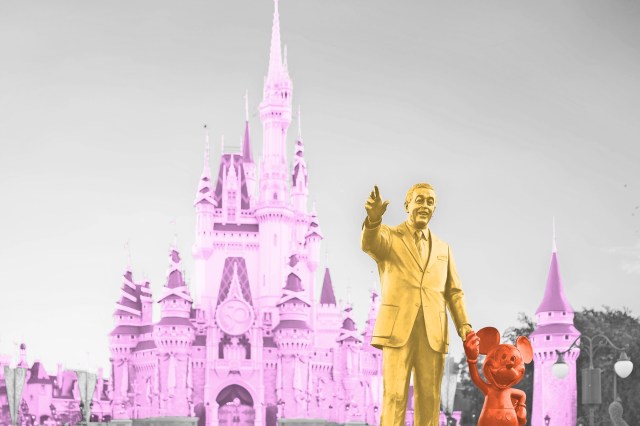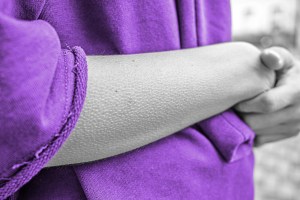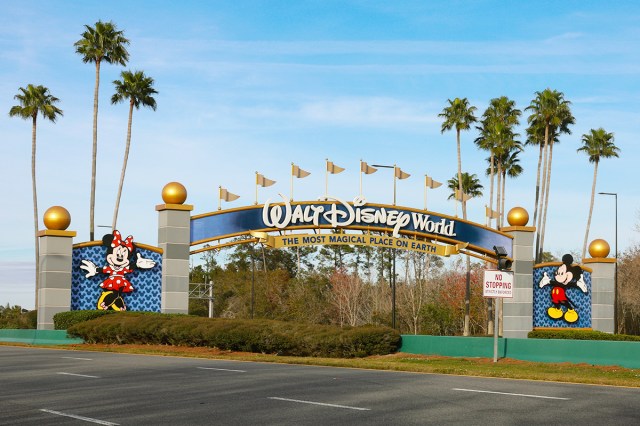
“Go Away Green” and Other Unassuming Colors
More than 30,000 unique paint colors are splashed across Disney parks, covering everything from buildings and walkways to shops and attractions. The most notable of these hues are also the most inconspicuous: “Go Away Green,” a range of shades specifically designed to be ignored.
Longtime Disney employee John Hench created the color as part of a catalog later called the “Hench Color System.” When Disney Imagineers want guests to overlook unsightly but necessary features such as electrical boxes or storage sheds, they typically use Hench’s “Go Away Green” because it blends in seamlessly with the parks’ lush landscapes. There are other unobtrusive color options as well, such as “Go Away Blue,” which is intended to blend in with the sky.
Conversely, some colors are intended to stand out. In Epcot, for example, the pavement is painted a particular shade of pink to complement the color of the surrounding landscaping. This strategy is based on simple color theory and makes the greenery appear more vibrant because red and green are opposite each other on the color wheel.
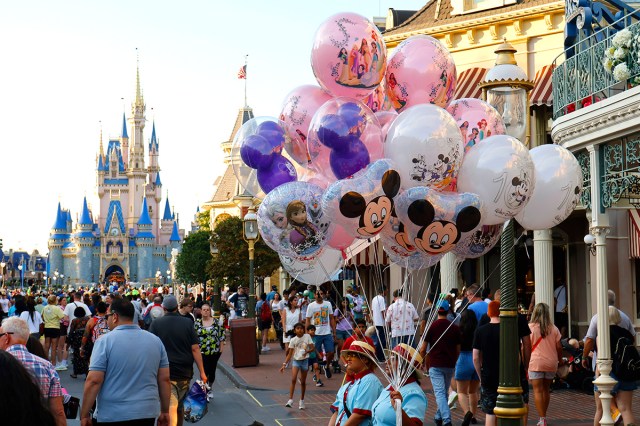
“Smellitizer” Machines
Disney parks offer a full sensory experience for guests, including carefully crafted scents. This is why the delightful aromas of candy and popcorn that waft down the sidewalks of Magic Kingdom’s Mainstreet, U.S.A are no coincidence. Those are achieved using scent machines called “Smellitizers” that release fragrances throughout the parks.
Jody Jean Dreyer, the former head of synergy and special projects at Disney, emphasized in an interview with Fast Company that Imagineers are “mindful that people are using all their senses” during their visit. Scents are strongly tied to emotions and often help us form lasting memories, which is why Imagineers employ various scents to make an impact on guests and transport them into different lands, attractions, and experiences. For instance, guests are greeted in the lobby of Disney’s Polynesian Village Resort by a perfume of hibiscus flowers, instantly transporting them to a Pacific island without leaving Orlando.
Disney has patented a technique called “scent blending” for use on rides. This technology gradually disperses scents, allowing for smooth transitions between scenes, similar to audio or video transitions in movies that are designed to be subtle, not jarring. As one scent fades, another becomes more prominent, creating a more natural, seamless experience for guests.
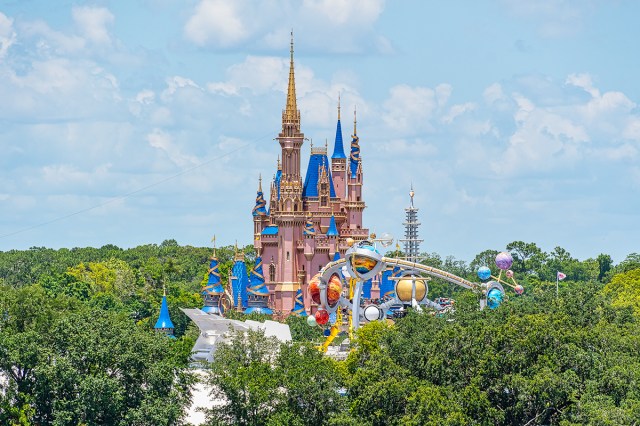
Forced Perspective
One of Disney’s most impressive tricks is the use of forced perspective throughout its parks, allowing buildings and landmarks to appear larger, smaller, closer, or farther away than they actually are. As explained by the popular YouTube channel Art of Engineering, forced perspective allows Disney to create “unbelievable structures that would otherwise be impossible, or at least too impractical, to construct in reality.” For instance, Disneyland’s Sleeping Beauty Castle is only 77 feet tall, but it appears to soar to greater heights thanks to this optical illusion.
On Disneyland’s Main Street, U.S.A., forced perspective is employed to make buildings appear taller than they actually are. The ground floor of each building is constructed close to normal size, while the upper floors are scaled down gradually, becoming smaller as they rise. Since our brains naturally expect each floor to be the same height, this shrinking technique creates the illusion that the buildings are much taller. This design enhances immersion, allowing Disney to achieve a grand effect without the need to construct full-scale buildings.
By contrast, the American Adventure building in Walt Disney World’s Epcot is designed to appear smaller than it actually is. Although it stands five stories tall, it appears to be only two and a half stories high. This is achieved by incorporating exaggerated architectural features, such as oversized windows and doors, in the exterior. This design choice allows the structure to have the more diminutive appearance of real-life colonial architecture while providing more internal space for theaters, a gallery, and a restaurant.
To make objects appear very far away, size alone isn’t always enough. This is where “atmospheric perspective” comes in. This concept involves adjusting the colors of objects to mimic the way color changes as light travels through the air, influenced by water droplets and small particles in the atmosphere. Those factors cause colors to fade or change.
In the case of Disneyland’s Sleeping Beauty’s castle, warm pink hues are used on the lower towers, while the top features a cooler tone by incorporating blue. This gradation helps the landmark appear much taller and more majestic.
More Interesting Reads
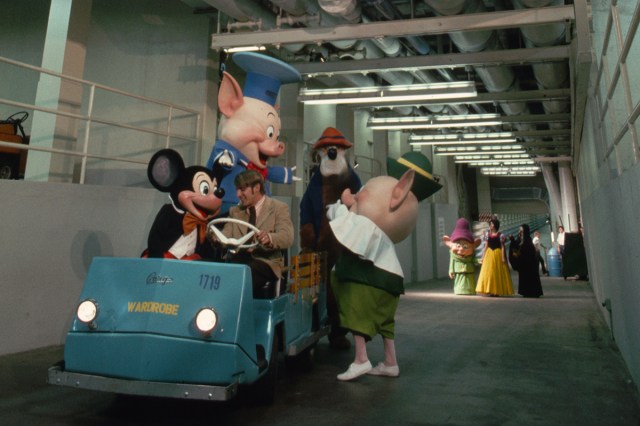
“Utilidor” Tunnels
One of the secrets behind Disney’s signature magic is how effortlessly it keeps its behind-the-scenes operations hidden from guests. In fact, the guest-accessible areas of Walt Disney World’s Magic Kingdom are built on the second level of a massive structure. Beneath guests’ feet, on the actual ground level, is the “utilidor“— a portmanteau of “utility” and “corridor” — a sprawling tunnel system that quietly powers the park.
The utilidor system connects all corners of the park via 29 access points, allowing Disney’s “Cast Members” and supplies to move between areas without crossing paths with guests, preserving the immersiveness at all times. The tunnels also house essential utilities (sewer lines, electrical wiring, and plumbing) as well as staff-exclusive necessities such as dressing rooms, offices, breakrooms, and the Mouseketeeria dining facility.
While typically off-limits to the public, guests aged 16 and older can experience the utilidor by joining Disney’s Keys to the Kingdom Tour, a guided experience that allows visitors to discover this backstage area.
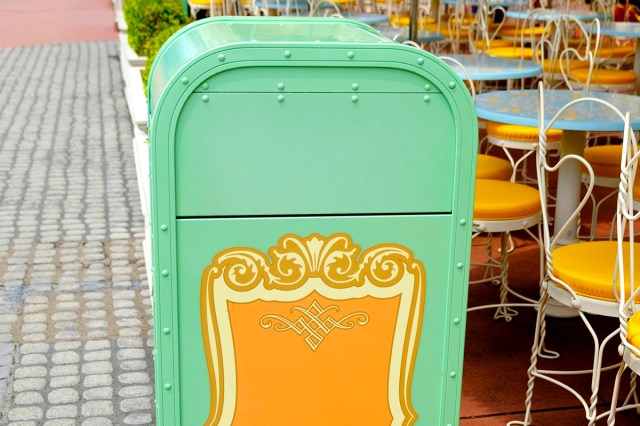
High-Speed Trash Tubes
Guests won’t encounter any trash pileups at Disney’s Magic Kingdom (the most-visited Disney park in the world) thanks to an advanced trash removal system. Every 15 minutes, this underground system of vacuum tubes transports waste to a trash compactor at an astonishing 60 miles per hour. That’s as fast as TRON Lightcycle Power Run, the fastest ride at the Magic Kingdom.
However, individual trash cans themselves aren’t connected to this system. Instead, custodians empty the hundreds of bins spread across the park into one of 17 collection stations. The waste ends up in a trash compactor behind Splash Mountain, where it’s then removed from the park.
According to CBS News, when Walt Disney was designing his first park — Disneyland in Anaheim, California — he noted that if trash cans were more than 30 steps apart, people had a tendency to litter. He decided Disney’s trash cans had to be closer together than that, and since it’s Disney, they’re no ordinary waste receptacles. They’re specially designed to blend in with their surroundings: For example, the cans in Star Wars: Galaxy’s Edge feature space-themed motifs, while the bins next to the castle are adorned with princess-pink patterns.

